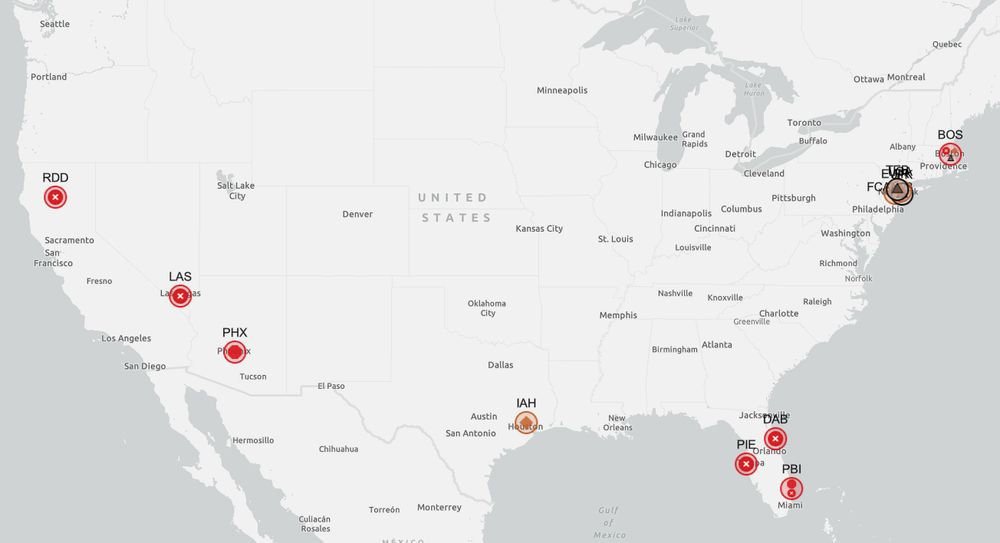Mexican President Sheinbaum’s Triumphant Year One
Claudia Sheinbaum in Mexico City, September 1.,Photo: Jesica Ramírez/Presidencia // El Pais
On September 15, Claudia Sheinbaum — the first woman president in Mexico’s history — stepped onto the balcony of the National Palace to perform the ritual _grito_ , or cry of independence.
In keeping with her government’s drive to recognize overlooked female figures in Mexican history, she included among the familiar pantheon of independence heroes names such as Josefa Ortiz Téllez-Girón, who tipped off insurgents that their plan had been discovered; Leona Vicario, who provided them with both intelligence and financing; and Manuela Molina, who fought directly in their forces as _La Capitana_.
At each mention in the list of _vivas_ , the packed crowd in the Zócalo, Mexico City’s central square, roared in approval. For them, President Sheinbaum’s year in power has been a remarkable success.
Share this article on
* __Twitter
* __Facebook
* __Mail
#### Continuity and Innovation
The ceremony capped a heady two weeks in which the Sheinbaum administration rolled into its one-year anniversary in office with a full head of steam. On September 1, the _presidenta_ delivered her first _informe_, Mexico’s equivalent of the State of the Union address, after which she hit the road to deliver parallel _informes_ in each of the thirty-two states. There was plenty of good news to report.
According to the most recent statistics, 13.4 million Mexicans were lifted out of poverty during the term of her predecessor, Andrés Manuel López Obrador (AMLO), while the Gini coefficient, measuring income inequality, has decreased from 0.426 to 0.391. Her first year has seen the passage of key laws and constitutional reforms, including a judicial reform providing for the direct election of the federal judiciary; recognition of greater autonomy for indigenous and Afro-Mexican peoples; a “Mexican ERA” for women’s rights; strengthened public control over the energy sector; statutory approval for the public provision of internet, over 2,000 miles of train tracks (including two long-distance lines to the US border), and 1.8 million housing units; a first-in-the-world app law providing benefits for rideshare drivers; and a ban on the planting of GMO corn, though the nation is still forced to import it from the United States following a loss at a USMCA (United States-Mexico-Canada Agreement) dispute settlement panel.
Macroeconomic numbers are solid, despite perennially looming tariff threats that Sheinbaum has maneuvered Donald Trump into postponing three separate times. In some areas, she is building on initiatives begun under AMLO, such as maintaining annual minimum wage raises, continuing the groundbreaking daily press conferences known as the _mañaneras_ , lowering the public-pension age for women down to sixty, extending stay-in-school scholarships to all grades, and establishing public “well-being stores” to sell staple goods procured from small producers.
In other areas, she is striking out on her own, including an in-home health outreach program for seniors; development projects for a satellite, semiconductors, and an electric mini-vehicle; and the creation of a cabinet-level Department of Women’s Affairs and Department of Science, Humanities, Technology, and Innovation. All of this together, crucially, with a 25 percent drop in Mexico’s murder rate. In this light, it is not surprising that she has maintained a consistent approval rating at or around 80 percent, placing her among the highest-ranked leaders in the world.
And where AMLO, with his folksy ways, knack for an anecdote or a nickname, and an endless ability to wind up self-absorbed elites, was the great communicator to the Mexican people, Sheinbaum has given the Fourth Transformation a much-needed international projection. Case in point, the promotional videos accompanying her State of the Union address that circulated widely on US social media, allowing substantial sections of the public — including some on the Left — to discover, after seven years, that something interesting is indeed happening in Mexico.
#### El Plan México
But a strong first year alone will not stymie the bullying or deranged bombing threats emanating from the White House and other quarters of the national security state, nor will it automatically adjust Mexico to the rapidly changing realities of a multipolar world. To accomplish this, Sheinbaum has launched the _Plan México_ : an industrial-planning and import-substitution initiative designed to leverage state leadership in strategic areas such as energy to foster a Mexican-centered model of sustainable national development.
If you like this article, please sign up for Snapshot, Portside's daily summary.
Email
(One summary e-mail a day, you can change anytime, and Portside is always free.)
Leave this field blank
The idea is to link AMLO’s push for sovereignty and self-sufficiency with a greater emphasis on science and technology, potentiating infrastructure such as trains and ports while building out a welfare state based on constitutionally enshrined social rights rather than here-today-gone-tomorrow entitlements. The plan also embraces the urgent issue of market diversification in order to reduce the nation’s dependence on its northern neighbor (some 80 percent of Mexican exports continue to go to the United States), as exemplified by the recent Mexico-Brazil trade summit.
On paper, this looks like exactly what Mexico needs. In practice, there are causes for concern. Memories are still fresh of the massive expansion of the maquiladora model in the 1990s, which fed on the tariff advantages of NAFTA and the tax breaks provided by successive neoliberal governments to set up a seamy realm of low-wage, assembly employment in the designated border zones.
Then, in 2016, Institutional Revolutionary Party (PRI) president Enrique Peña Nieto attempted to import the Chinese model of special economic zones (SEZs) into four of the nation’s poorest states; the project, with its costly focus, again, on tax breaks rather than actual benefits for the communities hosting them, was such a failure that AMLO quickly dispensed with them once he came into power. Instead, he pivoted to what became known as the development poles, which sought to balance tax incentives with social-development goals in housing, training, and the bringing of local providers into supply chains. Results so far have been uneven.
And here is where the _Plan México_ comes in. It is fundamental that the plan place a genuine emphasis on local development in the form of knowledge, production, patents, and intellectual property. The aim is for foreign direct investment (FDI) to be targeted and in keeping with the overarching goals of industrial policy, anchoring local industries strategically and ensuring technology transfer that goes beyond simply employee training. And rather than a “simple” process of public infrastructure for private behemoths, governmental intervention needs to facilitate a process of greater local complexity.
In practice, however, early efforts appear to be too narrowly focused on FDI for FDI’s sake, allowing foreign multinationals such as Coca Cola or Nestlé to simply place the “Made in Mexico” label on their domestic production and chalking it up as a win. A model, in short, that veers dangerously close to the failed experiments of the past.
#### Policy or Pressure?
Then there is the China issue. In the spring, the Sheinbaum government imposed an initial set of modest tariffs on textiles, apparel, footwear, and select consumer goods. The rationale was to protect domestic manufacturing against high-volume, low-priced imports, an understandable measure in light of Mexico’s difficult experience in grappling with a similar phenomenon from the United States for decades.
The second round, announced on September 10, however, was much higher and more sweeping, hitting over 1,400 products including electronics and automobiles with tariffs of up to 50 percent. While the Sheinbaum administration was at pains to insist that the policy is directed at all countries that do not have a free-trade agreement with Mexico, it is abundantly clear that China was the primary target. It would be truly ironic if, with the purported objective of fostering national development under the _Plan México_ , the tariff policy wound up cutting off Mexican businesses from Chinese industrial components, manufacturing equipment, and green technology in the form of solar panels and electric vehicles, yoking it even closer to the United States precisely at a moment when, under Trump, the country is lurching full-speed backward in terms of the energy transition.
The question has to be raised: How much of the decision arose out of legitimate industrial-policy concerns and how much was an attempt to placate anti-China bullying coming from the United States? If the latter, Mexico has to know by now that the United States will never be satisfied with any concessions but will always come back for more. And as consultations for the USMCA get underway in the run-up to the 2026 review-and-adjustment period, Mexico would be well advised to have this realization front and center more than ever.
#### Back to the Zócalo
On October 5, the Zócalo will once again fill with people for the official celebration of President Sheinbaum’s one-year anniversary in office. There is much to celebrate. In dark historic times, Mexico is not only making impressive strides in combining development, rights, and social welfare, but it is also showing that such a project can be electorally popular, even dominant.
In so doing, it is acting as a beacon against the encroachment of an international neofascism that, through showy displays of aggression and violence, attempts to portray itself as inexorable. In Sheinbaum, moreover, Mexico has an able leader in both the political and technical spheres, heading a movement that remains motivated and mobilized.
The challenge, now, will be to take the necessary steps toward a genuine economic sovereignty that matches the rhetorical pronouncements. And that may require a still more difficult layer of decisions that cannot be postponed much longer.
_[**Kurt Hackbarth** is a writer, playwright, freelance journalist, and the cofounder of the independent media project “MexElects.” He is currently coauthoring a book on the 2018 Mexican election.]_
_Jacobin‘s fall issue, “Borders,” is out now.Follow this link to get a discounted subscription to our beautiful print quarterly._
* Mexico
* Claudia Sheinbaum
* Claudia Sheinbaum Pardo
* AMLO
* Andrés Manuel López Obrador
* Tariffs
* Trade Tariffs
* Economic Policy
* foreign policy
* Politics
* policy
* Donald Trump
* U.S.-Mexico relations
Subscribe to Portside












